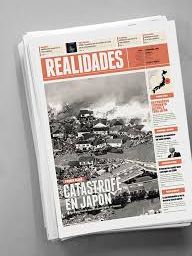This is a summary of an Article with the same name. To read the complete version, Click Here
Iran is opening up, and this also means that trade with Iran is picking up. However, receiving international payments and also making international payments to Iran is still a problem. What are the ways to overcome this?
 A bit of recent background: lifting the sanctions
A bit of recent background: lifting the sanctions
The June 2013 Presidential election was a turning point in Iran’s policy towards the reopening of the country to the world and reconciliation with the international community. Nuclear negotiations with six countries (Germany, America, Britain, France, China and Russia) were launched in order to solve the nuclear issue. The negotiations led to the signature of the Joint Comprehensive Plan of Action (JCPOA) on the 14thof July 2015, which removes nuclear-related.
Iran sanctions in exchange for a reduction of Iran’s uranium enrichment. Sanctions were officially removed on the 16th of January 2016 (Implementation Day), after the International Atomic Energy Agency (IAEA) – in charge of monitoring implementation of the nuclear deal – published a final report asserting that Iran was abiding by the JCPOA. Although sanctions related to human rights and missile programs are still in place, none of them specifically calls for a boycott of Iran’s financial market. So it can be said that the remaining sanctions mostly deal with military affairs rather than economic and financial ones.
Basic financial facts to know about Iran
The currency of Iran is the Iranian Rial. At the time of writing this article (April 2017) one US dollar is worth around 37,000 Iranian Rial in free market. Iran is holding the 29 position in the world by nominal GDP. Its national debt in 2015 was 62,023 millions of dollars, (15.90% debt-to-GDP ratio) and its public debt per capita is 784$ dollars per inhabitant.
Iran is aiming to reach an 8% annual GDP growth and maintain it until 2020. Non-Iranian estimates forecast growth of around 5% a year. The Iranian government is taking steps to reduce inflation, which stood at 7.36% in 2016. However, this has gone down steadily from a 34% inflation rate in 2013.
The latest credit rating published by FITCH in 2006 ranked Iran B + and B for long and short- term supply, respectively. Currently, none of the credit rating agencies declare Iran’s credit rating, but according to the latest rankings by the OCED, Iran’s rating improved from 7 to 6.
Iran imports the most from China, the UAE and Korea. Exports also go mainly to China, the UAE and Iraq.
VAT and corporate tax in Iran
 The standard VAT rate in Iran is 9%. VAT rates applied to special goods are:
The standard VAT rate in Iran is 9%. VAT rates applied to special goods are:
-
· 15% on cigarettes and tobacco products
-
· 30% on gasoline and aircraft fuels
-
· 11% on fuel oil
17 types of goods and services are VAT exempt including basic food, medicines, agricultural products, financial services, immovable property and handmade carpets.
The corporate tax rate is 25% and applies to both resident and foreign entities (except insurance enterprises and non-Iranian airline and shipping companies).
US sanctions remain in place
U.S. primary sanctions remain in place and apply to U.S. financial institutions and companies, including non-U.S. branches (but not subsidiaries). U.S. dollar clearing restrictions have not been lifted and pose a significant challenge for larger non-U.S. global banks to re-establish CBRs. This in turn restricts access to corporate trade finance and limits access to reserves, foreign assets, and export earnings particularly from dollar- dominated oil sales. On December 15, 2016, the Iran Sanctions (10 years) extension Act became law. Other non-nuclear sanctions, including SDN list restrictions, which were broadened to cover new individuals and companies in February 2017, remain in place.
Following the lifting of many financial and economic sanctions, Iran’s financial institutions are starting to work with the international banking system. Banking changes include:
-
more than 30 Iranian banks are reconnected to Society for Worldwide Interbank Financial Telecommunication (SWIFT)
-
network more than 200 international banks have started correspondent relations with Iranian banks
-
Iranian banks have opened more than 400 accounts with non-Iranian banks some banks are seeking to either open foreign branches or start relationships with international banks
-
some Asian and Middle Eastern banks are beginning operations within Iran
Different methods of transferring money to/from Iran
In order to do business transactions with Iran, and apart from more complicated financial instruments, payment can best be arranged though
Letter of Credit
A Letter of Credit (LC) is a financial guarantee that can be opened through a bank. Letter of credit is a safe and secure way to pay for goods. The Central Bank of the Islamic Republic of Iran communicated a directive with 7 items to open LC and drafts to the banking network:
-
Statistical registration certification issuance from the central bank resources with the Muscat bank is possible for euro, Swiss franc, pound, yen and Omani riyal. Statistical registration certificate approved in Euro in the Muscat bank will also be used to supply currency from the Bank EIH.
-
In opened LCs, the Muscat and EIH bank can be determined as the advising, dealer and also reimbursing bank.
-
Statistical registration certificate approved in Euro in Kunlun Bank for imports from origins other than China can be used in Muscat or EIH Bank.
-
For registration of orders related to the import of goods with a maximum amount of 500,000 Euros (for all cases including Kunlun Bank, Halk Bank, etc.), to make payments by payment order is possible and registration of orders with higher amounts (with the exception of cases for which the statistical registration certificate approved before the day of implementation JCPOA) shall be acted simply by opening LCs or drafts.
-
The deadline for opening LC/ drafts from the date of statistical registration certificate issuance is a month and the duration for supply of its currency at the request of the agent bank will be until the payment of documents fund and in compliance with current practices.
-
In the event of a change in the type of currency rate of the goods subject to LC tariff from “bank currency” to “applicant currency “, an extension of the maturity date will be possible only from the applicant currency.
-
In order to enhance the credit power of banks with foreign brokers, foreign currency deposits are agreed by the Central Bank to Iranian banks for three months and at Libor4 rates. Deposit amount is determined according to the financial capacity and volume of foreign currency activity of the bank. Extension of the deposit at the maturity date is subject to the deposit performance report by the agent bank to the International Department of the Central Bank. To offer foreign exchange facilities from these deposits to customers is prohibited.
Telegraphic transfers (electronic bank transfer)
TT stands for Telegraphic Transfer. In this method, a foreign seller demands a down payment of 20% to 50% of the goods price issued in accordance with a (proforma) invoice. The buyer can transfer the down payment through Iranian banks to the seller’s account. In BSP Commerce, the above transactions are made with government funds and at the reference bank price.
Upon completion of the TT process by the client (custom declaration, cash deposit…), the bank will immediately proceed with the transaction and send the money to the foreign corresponding bank through the SWIFT system.
Costs will vary with the amount, being around 10 dollar for a small amount up to 50 dollar for bigger amounts.
ReFinance
Refinance credit is a credit paid under a short-term credit line established between two banks or financial institutions under an agreement. Through this credit line, the price of the goods transacted between the buyer (applicant) and supplier (beneficiary) is paid to the supplier at the time of presentation of shipment documents on cash (at sight) basis. The opening bank (issuing bank) will then receive from the buyer and repay the amount paid to the seller by the corresponding bank (financer), plus the related interest one year later.
Terms and conditions of opening refinance in the Bank Mellat are checked in the following:
Persons Qualified to Use Refinance LoansManufacturing and trading natural and legal persons with a minimum credit record of 5 years, producers and importers of drugs and pharmaceuticals, auto and parts manufacturers.Authorized GoodsGoods, raw materials, spare parts, machineries for production lines and services importable to the country for which there is no legal prohibition on using the above-said facilities.Refinance Loan CeilingThe maximum ceiling of refinance facilities is 80% of the amount of proforma/commercial contract signed.Terms of Payment
Loan Interest RateLoan interest rates are calculated based on six-month LIBOUR and/or EURIBOR rates plus a margin determined according to the borrower’s risk rating in the country.Loan Duration
Collaterals
Delay penaltyLate penalty surplus to the profit margin in addition to the LIBOR / EURIBOR rate (facilities rate) will be in accordance with the contract. |
Usance
Usance is a kind of LC through which the seller accepts a deferred payment from the buyer. In case the seller doesn’t accept the Usance contract, often a financial institution or a third commercial bank pays the seller on behalf of the buyer, who will then repay the bank at a set interest rate.
Usance credits is allowed up to US$ 50 million yearly to import, complete and equip production lines for up to three years.
The text of the instruction is as follows:
-
Deferred LC for up to three years is only granted to importers for the completion and equipment of production lines provided that the importer gets the necessary from the relevant Ministry.
-
In order to grant these deferred LC payments to the importer, banks are required to conduct a feasibility study and comply with all financial directives issued by the government.
-
10% of the credit should be paid upon opening the LC and 10% once the deal is closed and all documents signed. The remaining amount is to be paid at the time of maturity.
there is 7 more points to this instruction
Draft
Draft can be utilized as another type of import payment in Iran. The buyer may be concerned that the goods may not be sent if the payment is made in advance. To protect the interests of both buyer and seller, documentary letters of drafts are often used. This method requires that documents be presented before the payment is made. In this case, a bank deposit is not necessary.
-
The buyer has to apply for import licenses to the relevant Ministry.
-
The buyer is required to present Bank Mellat with all the necessary documentation such as the 8-digit orders registration number received from the “Ministry of Industry, Mine and Trade”, the proforma, insurance, and if necessary a permit from the Organization of Transportation and Terminals
-
Mellat Bank is required to conduct a solvency and due diligence check in order to determine the advance payment amount.
-
Mellat Bank is required to issue a draft number to the client
-
Mellat Bank is to receive shipping documents attached to the draft through the corresponding bank
-
For sight draft, Mellat Bank is required to ask for an underwriting and funding guarantee from the client.
-
For time draft, underwriting is required from the client and then Bank Mellat will guarantee the payment. The shipping documents will then be delivered to the client in order to finalise custom clearance.
-
After custom clearance, the client should present to Mellat Bank a custom certificate (green license) for all goods bought using the LC.
Foreign banks that support business with Iran
Iran performs most of its foreign trade in Euro and other currencies such as the Chinese yuan, the Korean won and the Emirati Dirham. The following banks are known as facilitating business with Iran.
Country |
Website |
Bank name |
China |
http://www.abchina.com/en/ |
AGRICULTURAL BANK OF CHINA 1 |
Italia |
https://www.bancaubae.it/en/ |
BANCA UBAE SPA 1 |
China |
BANK OF GANSU CO., LTD1 |
|
Germany |
https://www.sska.de/en |
STADSPARKASSE AUGSBURG 1 |
and so many more |
[1] According to the information of Bank Mellat
The foreign banks most willing to cooperate with Iranian banks are BCP BANK, KBC BANK and HALK BANK.
At present, Iranian banks have re-opened branches in some European countries – Germany, Britain, France, Italy. Branches of Iranian banks are also active in Iran’s neighboring countries such as the United Arabic Emirates and Turkey. In addition, the Central Bank of Iran has direct links with the Central Banks of Italy, Austria and some other countries.
There is no Iranian bank active on the American continent due to US sanctions and concerns money laundering issues as well as a lack of significant Iranian oil exports to this continent.
Germany-based Europaeisch-Iranische Handelsbank AG (EIH) and two Italian lenders, Mediobanca and Banca Popolare di Sondrio, were among the 200 banking establishment with business links to Iran. EIH handles the bulk of Europe’s letter of credit business, which gives European exporters an appropriate financial instrument to get their money from Iranian clients. EIH has also been providing letters of credit of between 180 and 360 days with deferred payment for business with Iran and other banking services between Iran and Europe
Mediobanca, which has commercial ties with Iran dating back to 1952 and an office in Tehran, is looking at opportunities in Iran including the privatization of companies, investment into and out of Iran, and lending and debt capital market activity
Popolare di Sondrio bank had an Iran team and was operating in the country
Conclusion
Making payments to Iran is not yet so straightforward as between the US and Switzerland. But there is strong progress and there are various ways. Eventually also costs of making transfers will go down.



